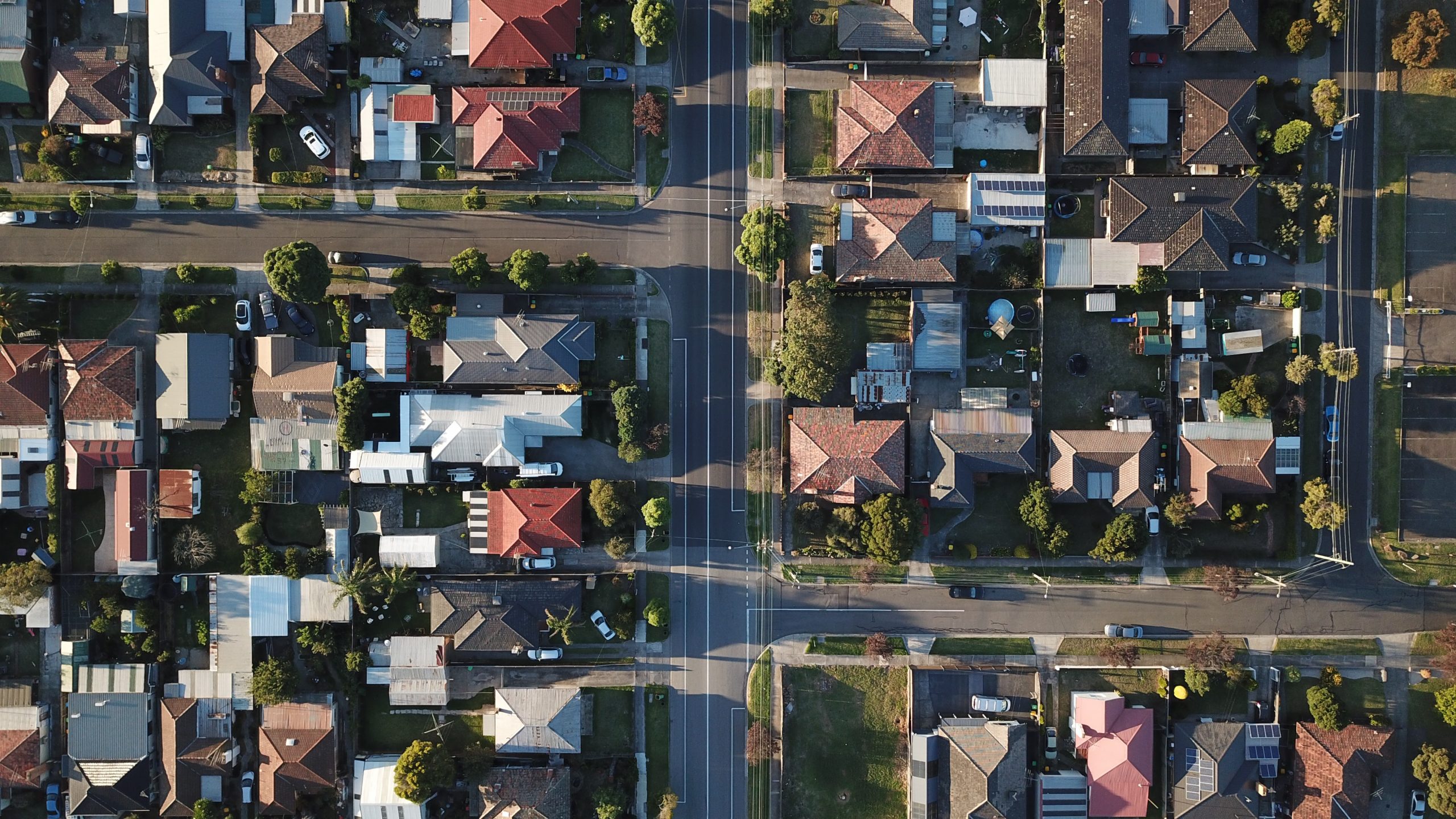The real estate market expanded as the COVID-19 pandemic progressed, leaving many in terrible financial problems. Homeowners and real estate investors benefited from the hard economic conditions. According to CoreLogic, homeowners with mortgages in the United States increased their equity by $1 trillion between September 2019 and September 2021.
Housing prices if you buy land in tulum have gained 9.5 percent over the previous year, according to the S&P CoreLogic Case-Shiller National Home Price NSA Index, which analyzes single-family home price movements. The average home was worth $245,000 at the end of 2020. According to the National Association of Realtors, by June 2021, that figure had risen to $295,300.
Housing supply and demand were both affected by the pandemic. Mortgage rates fell, lowering the cost of borrowing money to buy a home and driving up demand. Increased demand was fueled by an improving economy and a population of millennials who were entering their home-buying years and were able to work from home.
Throughout it all, the Federal Reserve has kept the housing market afloat by purchasing $40 billion in mortgage-backed securities each month. As more buyers—who were suddenly more mobile than ever—snapped up properties in less crowded, suburban locations, the number of available homes declined. Meanwhile, homeowners who would have otherwise listed their properties stayed put or pulled them off the market.
 Renters are flocking to the suburbs in search of less densely crowded multifamily housing. Businesses, too, have changed. From more expensive states like California, major employers have expanded to states like Texas (notably Tesla, Apple, and Samsung). People are relocating from densely crowded metropolis centers such as San Francisco, Los Angeles, and New York City to cities like Raleigh-Durham, Austin, Boise, and Phoenix, where there are favorable business climates, job growth, educated workforces, and affordability.
Renters are flocking to the suburbs in search of less densely crowded multifamily housing. Businesses, too, have changed. From more expensive states like California, major employers have expanded to states like Texas (notably Tesla, Apple, and Samsung). People are relocating from densely crowded metropolis centers such as San Francisco, Los Angeles, and New York City to cities like Raleigh-Durham, Austin, Boise, and Phoenix, where there are favorable business climates, job growth, educated workforces, and affordability.
As a result, owning single-family housing, multi-unit housing, or single-family housing appropriate for roommates has become a sound investment in various areas. The rental market demand will continue to rise as long as the supply of homes for sale remains low, making investment properties attractive. According to the Census Bureau, single-family rentals had an average occupancy rate of 95.3 percent in the third quarter of 2020. However, because real estate is usually a local investment, if you’re looking to get into the market, you’ll need to do your homework on the best spots to invest right now.
You should construct a set of criteria for acquiring rental homes while examining a real estate market for potential investment. Here are five things to think about.
Job growth: As a result of large corporate relocations in some cities—and as a result of tax incentives and other incentives in others—job prospects in some places have improved. WalletHub has conducted a study to determine the top locations for jobs in 2021 based on a number of key indicators such as employment growth and unemployment rates.
Strong population growth—particularly in locations where rental occupancy rates are already high—increases your chances of renting out sooner and for better rates. Vacancy and occupancy rates can be found on websites like Zillow Research. Remember that vacancy rates vary by neighborhood, so go as deep as you can into the number for your area.
Affordability and cost of living: Affordability is determined by a number of factors, including median home prices, median rent, state and local income tax rates, and the cost of living index, which determines your local purchasing power in purchase price, rent, utilities, food, and transit compared to the national average.
Potential appreciation: When considering a real estate investment in any market, you’ll want to assess the property’s rental income potential, which you may accomplish by comparing the rental histories of similar properties nearby. It’s also a good idea to think about the real estate’s possible future value; for example, if a property isn’t making much money on rent but its value is rising, it could still be a decent buy.
Potential income: To determine whether a property purchase is a wise investment, you’ll need to estimate your potential income. You can do this by dividing the revenue minus expenses (income) by the cap rate, which is the annual rate of return an investment property is expected to earn. The widespread consensus is that a good cap rate is 10%.
Remember that thinking about a market holistically is the smartest move. Are there cultural or sporting attractions, walkability, or a large number of urban parks that might make a city more appealing? What infrastructure investments are being made in the area, and what plans does the city or community have in place?
In their Emerging Trends in Real Estate report, the Urban Land Institute and global consulting and tax firm PwC examine the top housing markets for the coming year, taking into account not only important factors such as economic and financial issues, but also sociopolitical issues, real estate and development—as well as real estate industry disruptors.
In 2021, there will be five top cities for real estate investment.
 Raleigh/Durham, North Carolina is number one.
Raleigh/Durham, North Carolina is number one.
Because of the high-tech occupations in the area’s Research Triangle, the Raleigh/Durham area is one of the greatest places to invest in rental real estate in the coming year. While one-third of Americans rent their houses, Raleigh has a 43 percent rental rate and Durham has a 52 percent rental rate—partly due to the big student population, but also due to the youthful demographic that moves here for work. Other reasons to invest in Raleigh/Durham include the following:
The median property prices in Raleigh and Durham are $340,303 and $304,217, respectively, and have risen substantially over the last year.
The Research Triangle has a lot of career prospects; in fact, Raleigh is second only to Austin in terms of technology job chances.
The most popular dwelling type is single-family detached residences.
Raleigh and Durham have lower unemployment rates than the national average and higher annual average incomes.
The average apartment rent in Raleigh is $1,287, up 3% from a year earlier.
Raleigh’s population increased by 1.19 percent between 2017 and 2018, and its median household income increased by 1.6 percent, from $64,660 to $65,695.
Austin, Texas is number two on the list.
Low inventory, high demand, rising prices, and a booming employment market combine to make Austin’s housing market a recipe for success. The city has provided tax benefits to businesses that relocate here, and Tesla, Samsung, and Apple have taken advantage of those offers, either totally relocating (Tesla) or establishing major offices (Apple). Relocations to Austin are down 45 percent from 2020, while Texas continues to attract new inhabitants.
The unemployment rate in Austin is around 4.2 percent, which is significantly lower than the national average.
Austin’s cost of living is significantly cheaper than San Francisco’s.
Rents are progressively rising, but the median monthly rent is still a reasonable $1,431.
Austin’s real estate market is a good long-term investment: property values have increased by over 90% since 2012.
According to the Zillow Property Forecast, home values in the Austin-Round Rock metropolitan region have risen 30.5 percent in the last year and are expected to rise 37.1 percent by May 2022.
3. The city of Las Vegas, Nevada
The Las Vegas real estate market has been unpredictable, with one of the worst busts in the country during the Great Recession. However, due to a number of variables, including a low cost of living, no state taxes, and a diverse business environment, the country’s recovery has been rapid. It’s also a simple transition for Californians who can work remotely.
The population of Las Vegas is growing at an unparalleled rate. Its population has grown 14.53 percent from 2010, according to the latest recent census. It has a population of nearly 2 million people in the metro region.
Long reliant on tourism and hospitality, the city has expanded into the health, high-tech, and commercial real estate sectors.
Individuals and corporations pay no state tax, and there are fewer business-related taxes than in other cities.
The average monthly apartment rent in Las Vegas is $1,196, up 9% over the previous year.
Las Vegas is currently one of the most active seller’s markets in the United States.
4. The city of Dallas, Texas
Dallas’ varied economy is one of its economic strengths, generating jobs for individuals of all income levels. It has one of the lowest homeownership percentages in the country, with renting being less expensive than buying, and rental demand has risen dramatically in recent years.
Dallas’ population is expanding; in fact, Frisco, just 20 minutes north, is ranked No. 6 on WalletHub’s list of the nation’s fastest-growing cities.
In comparison to the national average of 33%, 52.9 percent of residents in the city rent their apartments or homes.
According to Realtor.com, the Dallas-Fort Worth metro area might witness a 15.7 percent increase in sales and prices in 2021.
The average rent for an apartment in Dallas is $1,276, up 2% over the previous year.
Dallas’ median home price is $259,621, up 12.3% over the previous year but still below the national average.
 Charlotte, North Carolina is number five.
Charlotte, North Carolina is number five.
The finance and technology industries have seen massive population increase and job expansion in Charlotte. And the city’s 25 colleges and universities help to keep the population young. Its cheap property taxes make purchasing a home easier than in other IT clusters.
Despite a 16.4% increase in the last year, the median property price remains affordable at $302,570.
The average apartment rent has increased by 6% to $1,259.
Charlotte is one of the greatest locations to live, according to U.S. News & World Report.
With a strong 47.93 percent of the population renting, it is a mix of owners and renters.
After New York City, it is the second most powerful banking center in the United States, and its financial success attracts IT investment.
Charlotte’s job market is improving, with a 2.3 percent rise in jobs from 2018 to 2019. It is expected to increase at a rate of 45.2 percent during the next ten years, above the national average of 33.5 percent.
